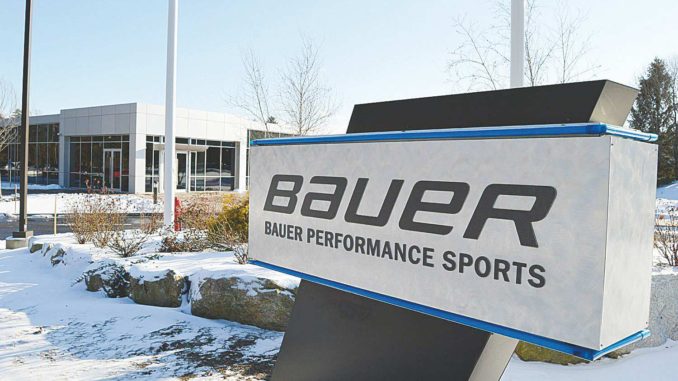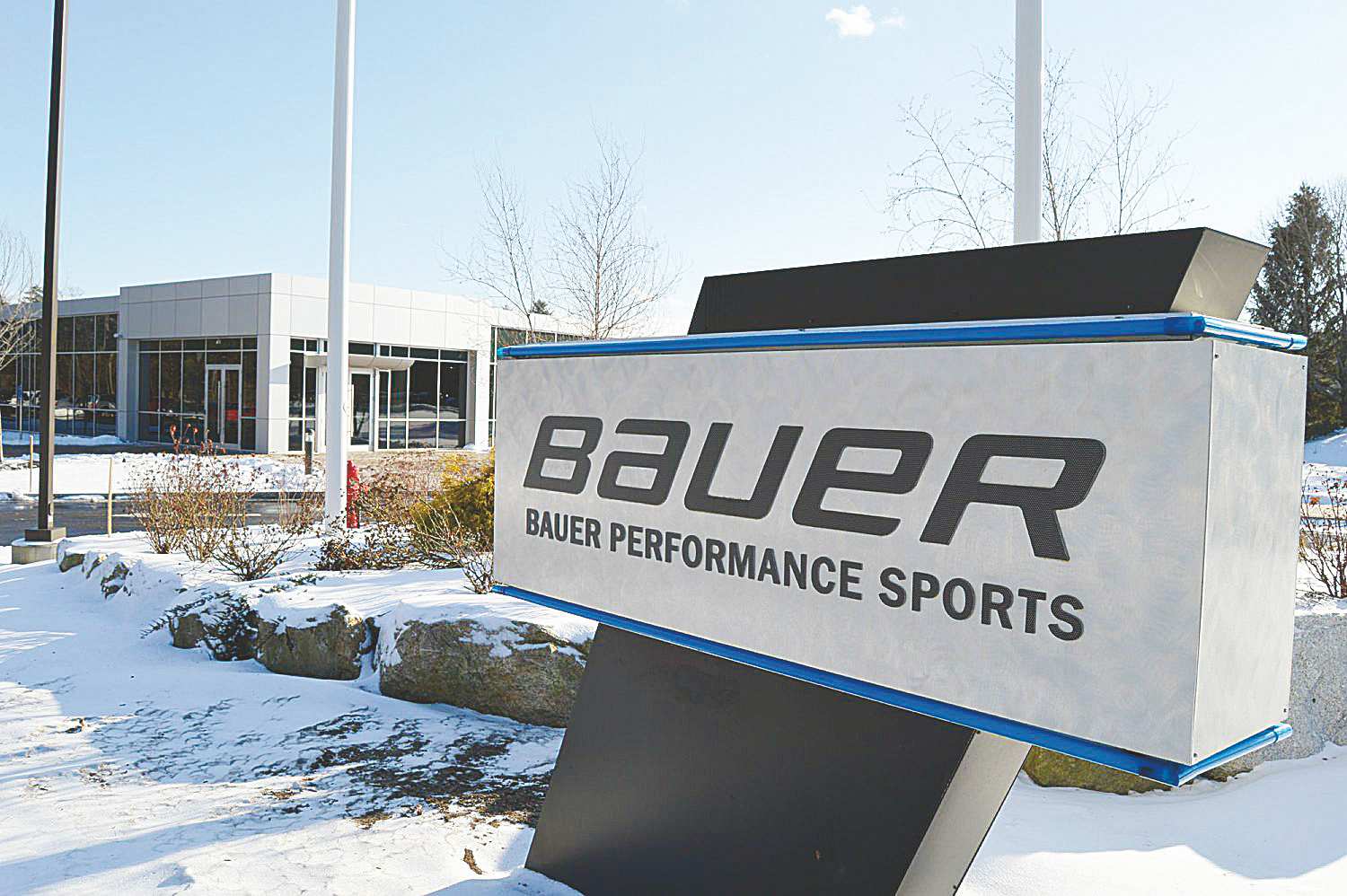
Whether you’re 80 or 8, if you’re an ice hockey fan you’ve certainly heard of Bauer – the name goes hand in hand with the sport.
But, while Bauer continue to turn out the very best equipment on the market – not as many people know about the company’s rich history. Allow us to give you a whirlwind tour through the last 90 or so years of a truly iconic brand.
Where it all began for Bauer Skates
The Bauer Hockey story begins in 1927 with the Bauer family from Kitchener, Ontario – and in particular, Roy Charles Bauer (1895-1989) – machine operator and President at the Western Shoe Company.
While the black and brown leather that the original Bauer skates were made of might look out of place today, the design they had in mind when they began the company has remained fundamentally the same throughout the years.
Bauer were the first skate company who took the step of securing the blade permanently to the boot, manufacturing the boots in house and outsourcing the blade manufacture to a company called Starr Manufacturing. This boot/blade configuration was a ground-breaking step at the time – and changed the way people would construct hockey skates from that point forward.
Of course, this innovative design was initially reserved for the very highest quality skates – a range the company marketed as the ‘Bauer Supreme’ – an iconic name which is still attributed to the highest quality Bauer skates today.
Building a player and fanbase for Bauer Skates
Fortunately for the family and the brand, the next generation of the Bauers included Bobby Bauer, whose solid performances for the Boston Bruins through the ‘30s and ‘40s saw him receive wide ranging accolades and a later place in the Hockey Hall of Fame.
After the second world war the company went from strength to strength from a design point of view, refining their designs of skates, sticks, helmets, gloves, pads, clothing and goalie equipment for the following 2 decades.
Although the research and design work was exceptional, Bauer couldn’t topple CCM and their Tackaberrys’ (later to become known as the Tacks we recognise today) – an incredible skate that was worn by around 90% of all professionals from the early ‘40s through to the late ‘60s.
Bauer later managed truly established themselves as iconic with a little help from one of the greatest players of all time – Bobby Hull. A sponsorship deal that might prove to be the most lucrative and formative for Bauer from then until the end of time.
Hull, also known as ‘The Golden Jet’ – based on his blonde hair and unbelievable (even by today’s standards) end-to-end speed was repeatedly named most valuable player and leading point scorer throughout his career, helping NHL and WHA teams scoop a trove of trophies and titles. Virtually every one of Hull’s accolades was achieved while wearing Bauer skates – a fact that rocketed the brand’s appeal with players and fans alike.
Parent company changes
Behind the scenes, the mid-‘60s was a time of great movement for the Bauer company – becoming a division of Greb, an enormous shoe manufacturer also based in Kitchener. The company was a true footwear giant of its time, with around 2500 people producing Greb and Bauer products through the ‘60s and ‘70s.
Greb itself was then bought by Warrington Products, a huge business empire that spanned from hockey to liquor distilleries – and with the purchase, further investment could be made into research and development that would elevate Bauer again…
The TUUK chassis
It wouldn’t be fair to attribute Bauer’s success entirely to the players that skated the brand, without exceptional design, the skates wouldn’t have performed at the highest level – but they did – and it was thanks in no small part to the revolutionary TUUK 2000 chassis that established itself in the top flight in the 1970s.
Where metal holders had gone before, the new plastic TUUKs were adopted by some greats – and pros choosing to stick to the metal option were physically left behind, with plastic offering noticeably greater acceleration, turning stiffness and general agility.
Over the coming few years, TUUKs dominated – and although they were starting to be seen in the early ‘70s they truly jumped from being virtually unknown in the 1976 finals – through to being almost universally adopted by the time the ’78 finals came about. An equipment revolution we’re unlikely to see again!
Warrington, Icaro Olivieri and Bauer
Although it’s a name that at the time was more familiar to ski fans, Icaro Olivieri merged his ski boot company with Bauer’s parent company Warrington in 1981. Olivieri was an innovator – still owing a huge number of ski and skate patents to this day. Within 7 years, he and a group of investors bought Warrington out, creating Canstar Sport – and changing his company’s focus almost entirely to hockey equipment.
Canstar brands – with Bauer as the flagship – dominated the NHL with TUUK holders well into the mid-‘90s – and continued to innovate further, producing the perforated TUUK chassis in 1994.
A new era for skate equipment
Such was the strength and durability of the perforated TUUK chassis huge amounts of weight could be shaved off skates – and the ‘90s saw an huge jump forward in Bauer’s skate design – as well as the plastic and composite materials that were being used to create them.
But, it wasn’t just the skates that were changing – Sportswear heavyweight Nike saw the increasing appeal of Bauer skates – and in 1994 bought Canstar entirely.
It took some time for Nike to put their stamp on the brand – but they did, releasing the Nike Bauer Supreme One90 in 2006. It’s worth noting that Nike, although having bought a huge number of a smaller sportswear manufacturers throughout the years, have never placed their name alongside any other – proof positive that the Bauer brand was a force to be reckoned with – both for players, fans and business people alike.
The time with Nike at the helm saw innovations across the board, the super-lightweight Vapor 1X skate came to be – as well as the Vapor XXX one piece stick and some game-changing helmet innovations.
Bauer today
The Bauer and Nike partnership came to an end in 2008 when Nike’s assets were bought for around $200 million by the Canadian Roustan Inc and US based Kohlberg and Co. Subsequently, Bauer made a series of company purchases – expanding their interests into lacrosse, baseball and softball.
Bauer’s performance on the stock exchange has been turbulent – with parent companies moving toward bankruptcy and the overall business being taken over again by Peak Achievement Athletics in 2017.
While boardroom performances might vary, performance on the ice has remained consistent for decades. Bauer continue to design, develop and produce the highest level of ice hockey equipment the sport has ever seen. With 90 years of ice hockey knowledge behind them, we can expect to see Bauer leading the way for decades to come.




